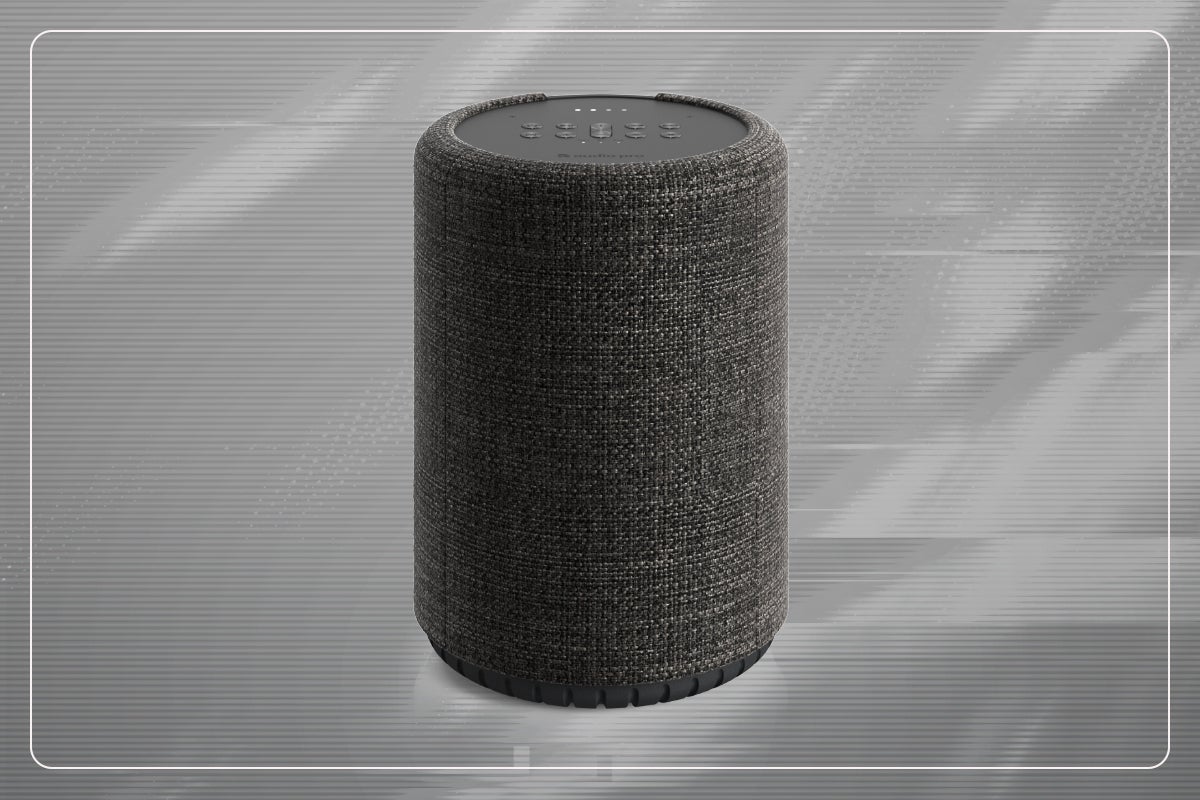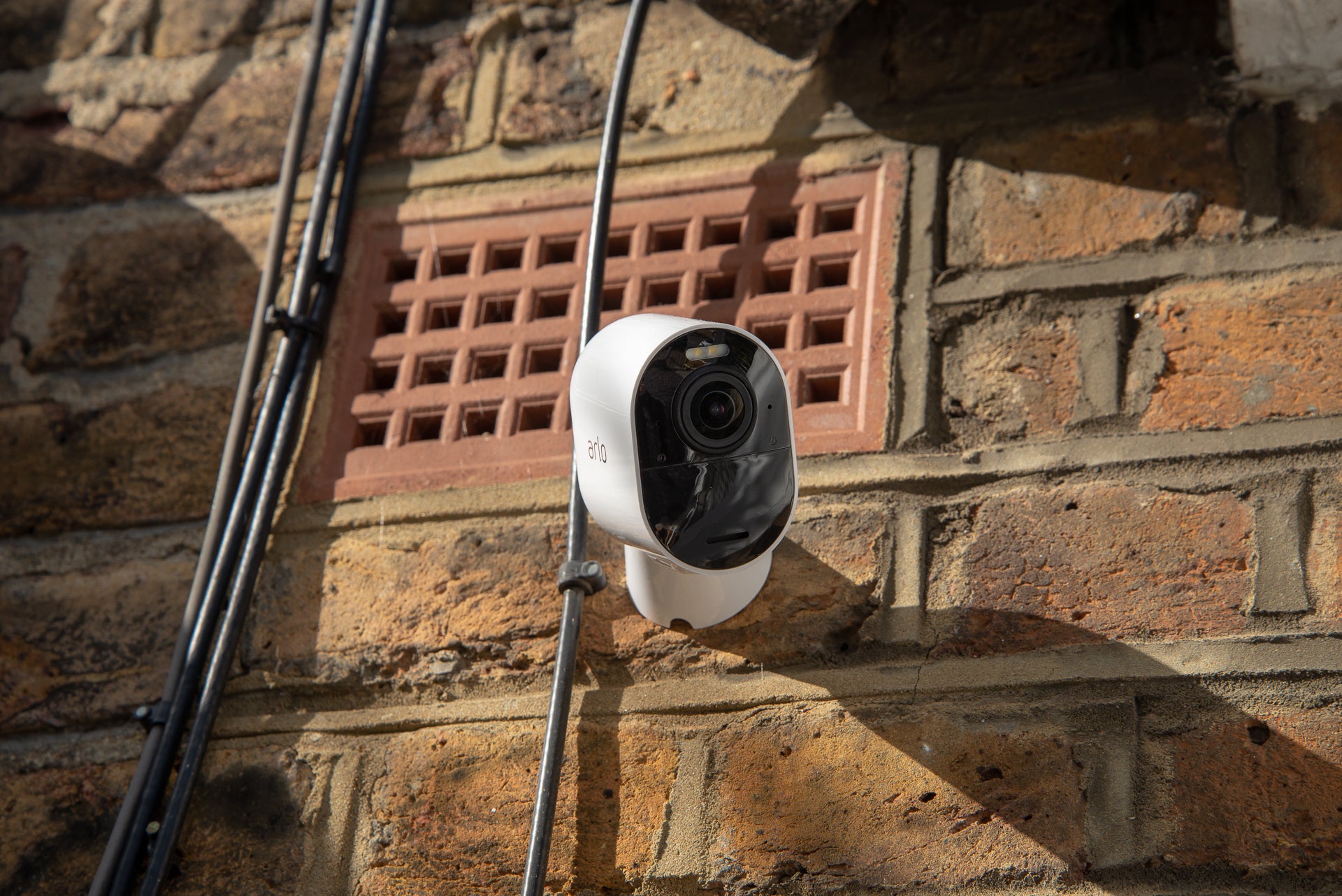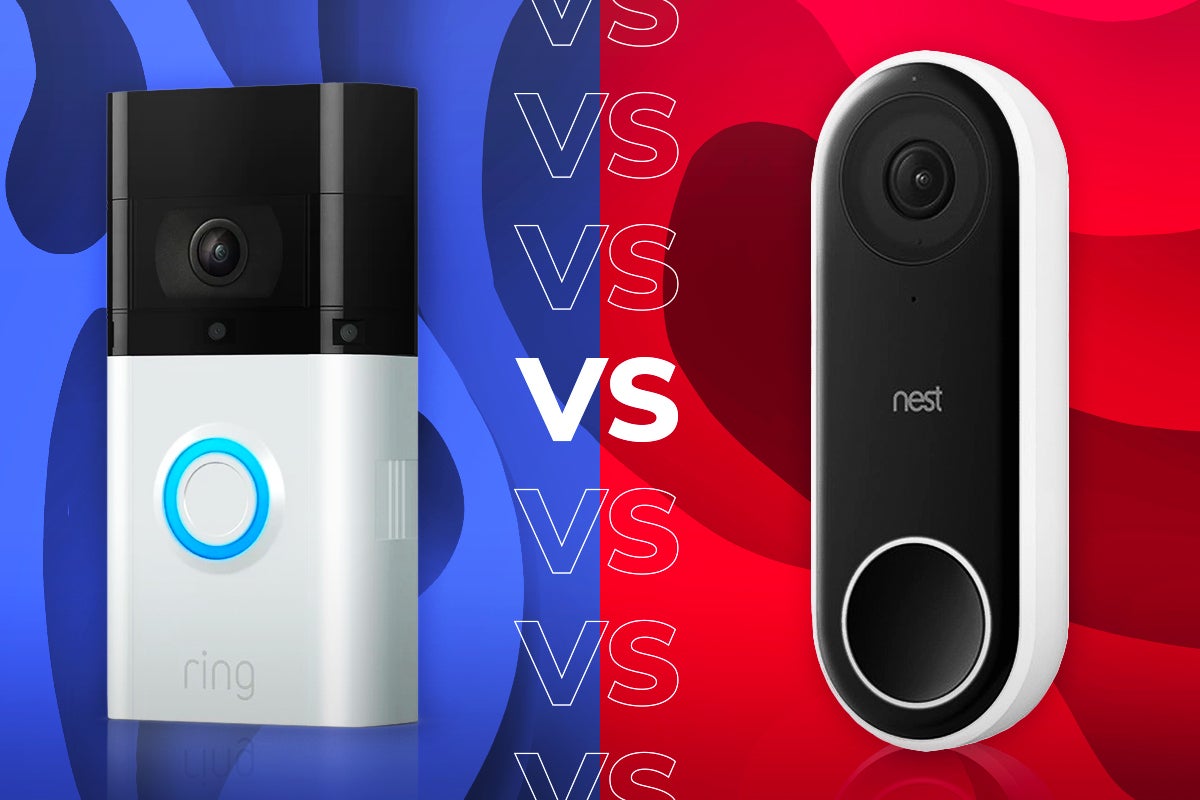Nest Doorbell (wired) vs Nest Doorbell (battery): Which should you buy?
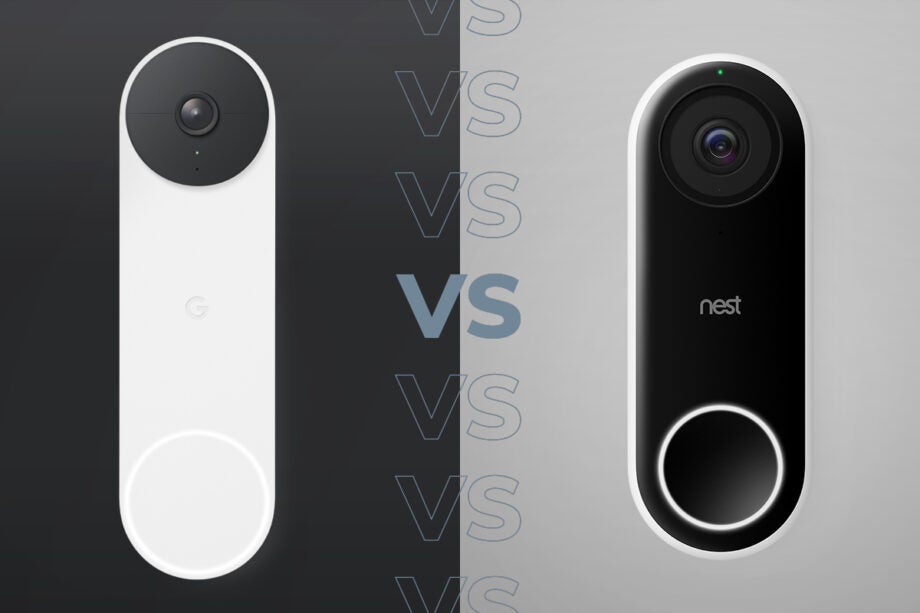
The Nest Doorbell (battery) is the first new doorbell we’ve seen from Google since 2018. Despite that new product, the old Nest Hello has been rebranded as the Nest Doorbell (wired), so which should you buy? We help you find the right product for you.
Normally, newer products are better than older ones. Here, the choice isn’t quite as clear, and both doorbells have their advantages. For the battery product, it’s that you don’t necessarily need a cloud subscription and you don’t have to permanently power it, making installation easier.
Yet, while the Nest Doorbell (wired) is three years old, we’re still impressed by it: so much so that the doorbell actually scored higher in our review despite it costing more than the Nest Doorbell (battery).

Price and availability
The Nest Doorbell (wired) came out back in 2018 under the Nest Hello name with an RRP of £229. Today, the doorbell costs the same amount of cash.
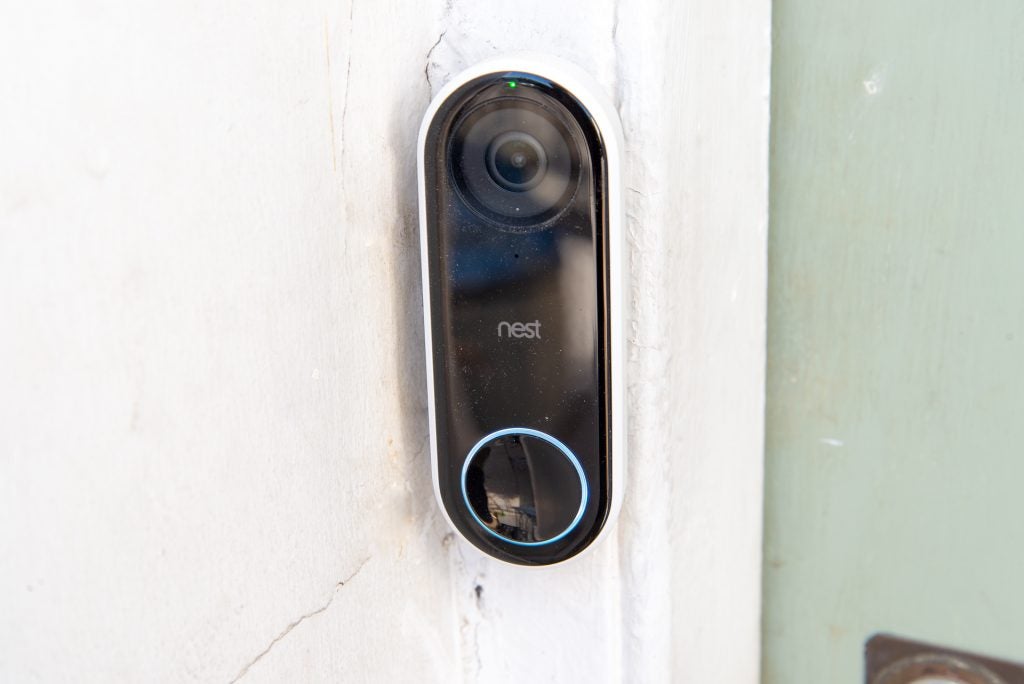
A little surprisingly, the newer Nest Doorbell (battery) launched in August 2021 and is costs £179.99. This means that, despite being three years newer, the Nest Doorbell (battery) is the cheaper of the two by £49.
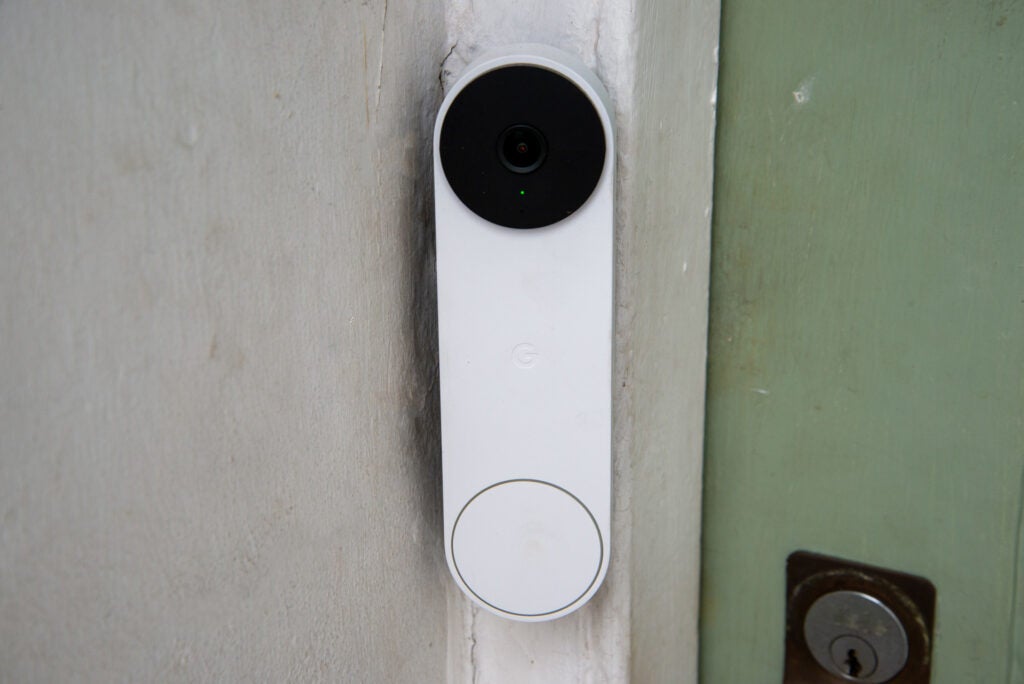
Design and installation
At a glance, the Nest Doorbell (battery) is considerably larger than the Nest Doorbell (wired). The battery-powered Doorbell measures 160 x 46 x 24mm, while the wired doorbell measures just 117 x 43 x 26mm. The difference in size is because the new doorbell has a battery built-in, making it a chunkier product.
That said, the Doorbell (battery) is easier to install and can be used wired or wireless. If you go for the battery-only installation, you can just screw the doorbell to the outside of your house, fitting the angle wedge if required, and you’re good to go.
In this mode, you have to remove the whole doorbell to charge it via USB every few months (the battery pack is not replaceable, so you can’t swap it out for a fully charged one as you can with the Ring Video Doorbell 4).
Alternatively, if you want to keep the battery topped up automatically, you can wire the Nest Doorbell (battery) into your existing doorbell circuit.
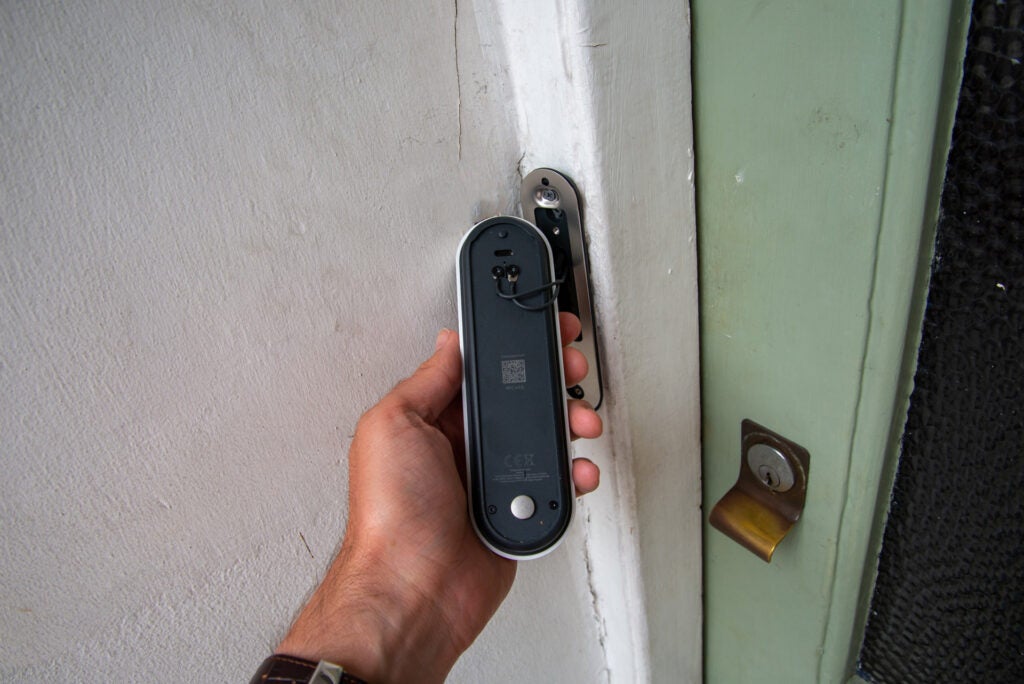
The Nest Doorbell (wired) has no battery, so has to be wired. To complicate things, you need a 16-to-24V AC transformer (many UK models are 12V, so you might need to get yours upgraded). You’ll also need to pick up an internal chime unless you’re happy to sound your doorbell through your Google Assistant speakers.
While it’s possible to install the wired doorbell yourself, less DIY-savvy users may want to hire a professional. Nest can call in an approved installer to do the job, but it’ll likely set you back £100 on top of the purchase price.
Features
While both doorbells are from Google, they’re actually managed via different apps. The Nest Doorbell (wired) runs on the Nest app, while the Nest Doorbell (battery) uses the newer Google Home app. Despite being older, we think the Nest app is actually a bit easier to use and makes finding recorded clips easier.
Features are similar for both models. With both doorbells, if someone presses the device, the indoor chime will ring and you’ll receive a pop-up on your phone which you can answer. There are a handful of pre-made messages that can be read by the doorbell if you can’t talk yourself or make it to the door at that moment. There’s also a Quiet Time feature you can use to temporarily disable the chime for short periods of time.
As far as the camera goes, you turn it on/off based on your location or choose to leave it running permanently. The latter makes sense for a doorbell.
With the Nest Doorbell (battery), you get up to three hours of recordings stored locally. This even applies if your Wi-Fi goes down. You also get on-device object detection, so you can choose what to record and/or be notified about: people, animals, vehicles and packages.
The Nest Doorbell (wired) has no built-in storage or recording, and you need a Nest Aware subscription (from £5 a month). This adds 30-days of event history, plus people and package detection.
Adding Nest Aware to the battery model ups storage, too, so might be useful for security reasons.
With both cameras, Nest Aware also enables Familiar Face detection. This lets you create profiles for people that you know so that the doorbell can tell you who’s at the front door. It needs a bit of management to keep profiles up-to-date but is a stand-out feature that rival doorbells don’t have.
Both doorbells work with Google Assistant smart devices only, meaning if you’re an Alexa user you’re better off investing in a Ring doorbell. With Google smart speakers, callers can be announced to your home. Even better, if you has a smart display, such as the Nest Hub, you can see who’s at the front door, send a quick reply or answer the door without turning to your phone.
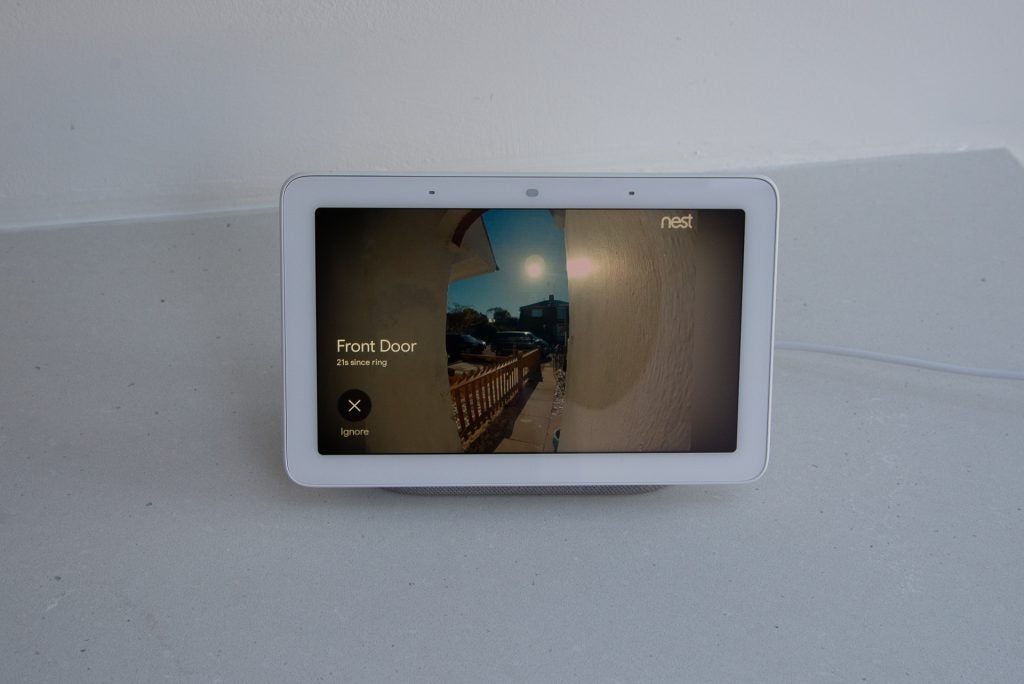
While the Nest Doorbell (wired)’s camera feed can be viewed on an Echo Show or a Fire TV, there’s no option for announcements or way to answer when someone rings your doorbell with Alexa. The Nest Doorbell (battery) is not compatible with Alexa devices.
Performance
The Nest Doorbell (wired) shoots video in landscape at a resolution of 1600 x 1200, while the 160-degree angle captures more of the outside world. The image is well-exposed with no blown-out areas or shadows to hide details and the image is sharp. However, you may lose a bit of detail in faster-moving videos.
The Nest Doorbell (battery), meanwhile, shoots in portrait but has a lower resolution of just 960 x 1280 and a narrower viewing angle of 145-degrees. You get less of the outside world but can see people from head to toe. That lower resolution video has an impact and image quality is worse overall. Generally speaking, the image is clear and balanced, but it’s overly sharp and features lack definition. You can compare the two below, with the Nest Doorbell (battery) on top and the Nest Doorbell (wired) below.


We also found that the Nest Doorbell (wired) is faster at sending notifications to your phone or Google device, generally arriving in 10 seconds and then taking a few more seconds to answer on your device. The Nest Doorbell (battery) needs a bit longer to wake up and connect to your wireless network (around 20 seconds), especially if it’s running wirelessly.
Specs
Which one should you buy?
The Nest Doorbell (wired) is the better doorbell of the two. While the wired doorbell is older, costs more and lacks offline video, it takes advantage of higher resolution video and is faster at sending notifications to your phone than the Nest Doorbell (battery). The Nest Doorbell (wired) also runs on the Nest app, which we found a little easier to use than the Google Home app used by the battery-powered doorbell.
If you use Google Home devices, you’ll need to opt for one of the two. If you’re more of an Alexa fan, you’d be better off opting for the very affordable Ring Video Doorbell Wired. If you can spend more, our favourite wired doorbell is the Ring Video Doorbell Pro 2, or the best battery powered doorbell with a 1080p resolution, the Ring Video Doorbell 4.


